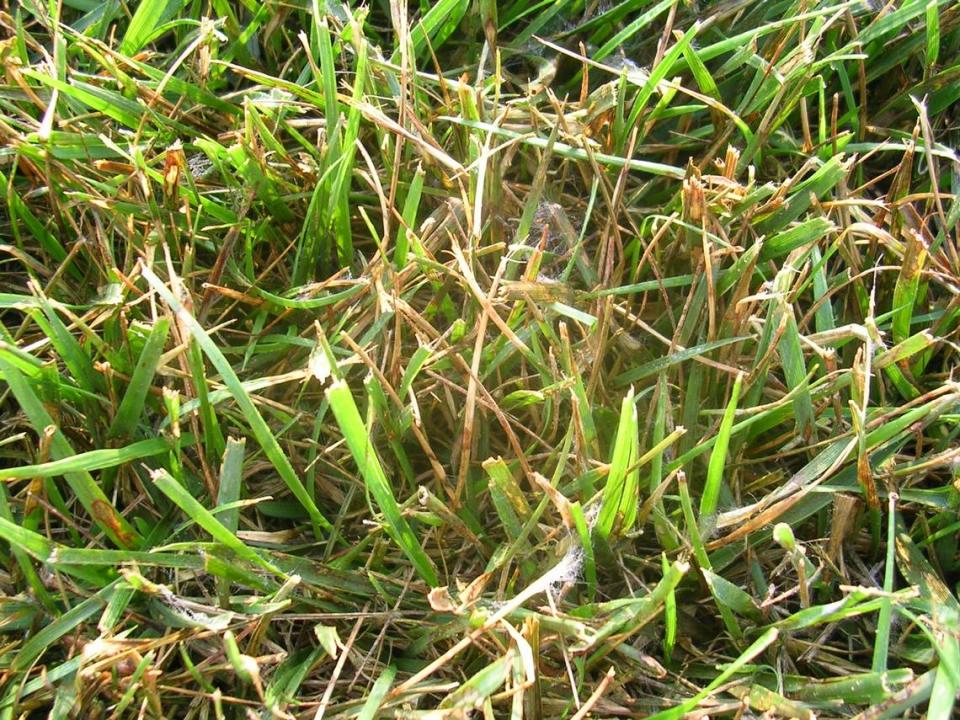A few years ago, while working a summer as a horticultural extension worker in western Kansas, I was inundated with questions about large dead grass patches in people’s lawns.
For those unfamiliar with the climate of western Kansas, it is very hot, terribly dry, and generally a dry growing environment. So, in this flurry of lawn stains, the first thought that came to my mind was, “Have we had enough water that it could be a disease?”
The answer was yes, we did, and with one or two extra showers in early summer and people overwatering their lawns, Brown Patch began to spread across the country.
Here in Kansas City, Brown Patch is a common problem, mainly due to the high humidity. In addition to warm summer nights, the blades of grass remain wet longer, allowing the fungal disease to establish and spread.
How do you identify it? As the name suggests, you will see a patch of dead brown grass, usually in a circle. However, if you look closer, you can also determine the presence of the disease by looking at the leaf blades. It appears as mottled streaks of dead grass with red rings around them. Another indication: The fungus usually appears on cool-season lawns such as tall fescue, bluegrass and perennial rye.

With the summer heat here and excessive moisture, it seems likely that Brown Patch is due for a revival. Lighter infestations usually recover in a turf area within two to three weeks, but with severe infestations the disease can be a death sentence.
To keep this under control, first look at your lawn care practices.
Avoid standing water on leaf blades for long periods of time. The best time to water the lawn is early, before sunrise. The sun will evaporate any remaining moisture, preventing mold spores from taking root or spreading. Additionally, this gives the lawn enough time to absorb the water instead of losing it through evaporation. Watering in the evening or at night should be avoided as this keeps the blades wet the longest and does not give them a chance to dry until the morning.
Over-fertilizing a lawn with excessive nitrogen is another major factor in developing the disease. Essentially, the nitrogen is the food source of the fungi. Depriving it of this resource keeps it under control. So it’s a trade-off. Your grass may not be as green as desired, but it will be healthy.
If an infection is severe and treatment is necessary, brown spot can also be suppressed with fungicides containing the active ingredients captan, propiconazole, triadmefon or myclobutanil. However, focus on prevention methods first. The grass can bounce out on its own.






